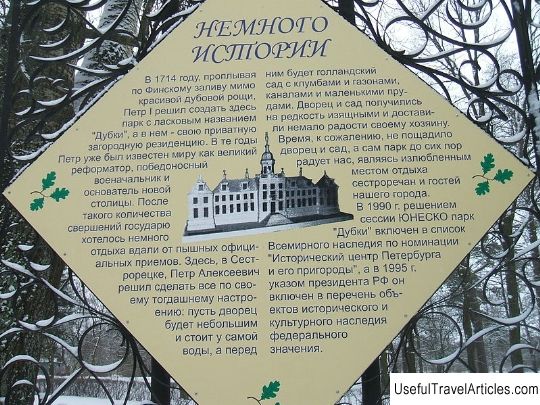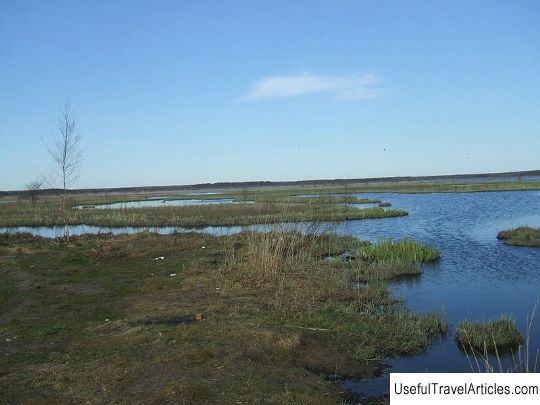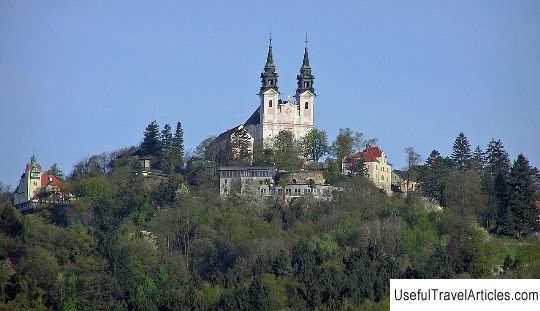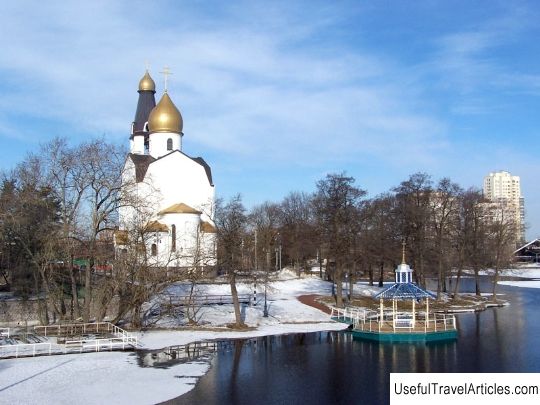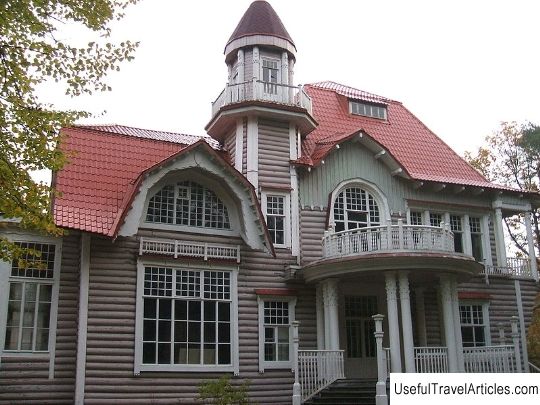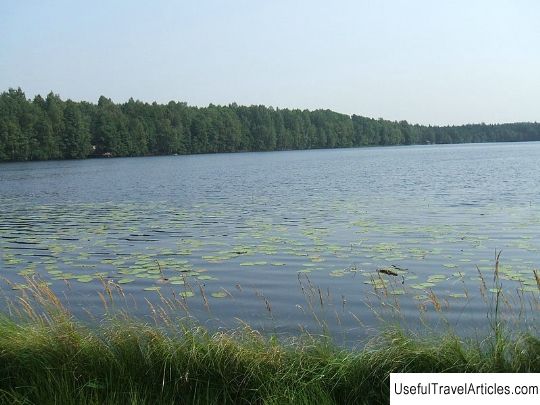Sestroretsk park ”Dubki” description and photo - Russia - St. Petersburg: Sestroretsk
Rating: 8,3/10 (1012 votes) Sestroretsk park "Dubki" description and photos - Russia - St. Petersburg: Sestroretsk. Detailed information about the attraction. Description, photos and a map showing the nearest significant objects. Photo and descriptionSestroretsk "Dubki" is a park of culture and recreation, which is an architectural monument with a federal level of protection. Its historical and cultural value is generally recognized. It is a park with a defensive rampart, hydraulic structures and a Dutch garden. Park "Dubki" owes its appearance to Peter I, who in September 1714, returning after the Gangut victory across the Gulf of Finland, stopped to rest in an oak grove on a promontory stretching into the sea, not far from the mouth of the Sestra River. The age of individual oak trees growing here was about 200-300 years old. In 1717, specially land was brought to the grove and several thousand oak trees were planted for the subsequent construction of the navy. "Dubki" is the northernmost oak forest in Russia. At the direction of the king, the architect Stefan van Zwietenn carried out the project, and the captain I.S. Almazov was building a palace, a protective dam. Orchards were also laid. From 1719 to 1725 a stone three-storey palace was built, which was connected to the wooden pavilions by galleries. The decorativeness of the building was achieved thanks to its unity with the surrounding landscape, the dynamic line of its facade, the contours of the roof and the elegance of an octagonal turret crowned with a spire specifically to raise the imperial standard. The building is made in the style of "Sea pathos" and is designed to be perceived from the sea. The length of the palace, excluding the galleries, was 62 m, and with the galleries it was 185 m. The height of the building together with the spire was 30 m. The total area of the building was 1300 m2. The building in the center had three floors, and two at the edges. The main halls were approximately 170 sq.m. Small rooms were located in the side wings. There were exits in the inner corners. The main entrance was located in the center of the building. The galleries, adjacent to the ends of the main building, were a narrow canopy made on light columns that stood in two lines. In 1727, after a devastating flood and storm, the palace was excluded from the list of royal residences. Since funds for the maintenance of the palace were not allocated, A.D. Menshikov took away valuable elements of interior decoration, some construction products. The palace became a warehouse for an arms factory. In 1782, the remains of the walls were dismantled and used for the construction of the Peter and Paul Church. The planning of the Dutch garden and park was carried out in 1723-1725. During the laying of the gardens, the Dutch method of developing shallow and flooded sea coasts was used: the drained shallow water was fenced off from the sea by a protective dam, which was cut through drainage channels, through which the water had to drain into the pond and pumped back into the sea by a special machine. This place is called the Dutch garden. Until now, it has retained its original layout, although overgrown with wild plants. Almost three centuries later, with the mown grass stand, the contours of flower beds and boulegrines, ponds and canals inside the flower beds are visible. There is a version that the garden got its name from the Dutch regular layout of paths and flower beds. Under Peter I, the garden housed greenhouses, a vegetable garden, lawns, trellises, ponds. They planted apple trees, chestnuts, buxbom, elm, cherries and pears in the garden, brought from Sweden. In connection with the emergence of the threat of the Russian-Swedish war of 1741-43. the first defensive ramparts were erected in the park. The second time defensive ramparts were erected to protect against the army of the Swedish king in 1788, which were also used during the Crimean War, when the Anglo-French fleet fired at Sestroretsk for several hours, but the French and British did not dare to land. In memory of these events in 1858, a chapel was erected in the park by the local clergyman P. Labetsky (destroyed after 1920) Today "Dubki" is the center of the sports and cultural life of Sestroretsk. In 2002, a new sports equestrian center with a hippodrome was built here. In 2007 a stadium was built, a boat station and tennis courts are operating. The park is the base site of the Olympic Committee. Festivals and competitions are constantly held here.         We also recommend reading Church of La Matriz (Iglesia de la Matriz) description and photos - Chile: Valparaiso Topic: Sestroretsk park ”Dubki” description and photo - Russia - St. Petersburg: Sestroretsk. |
